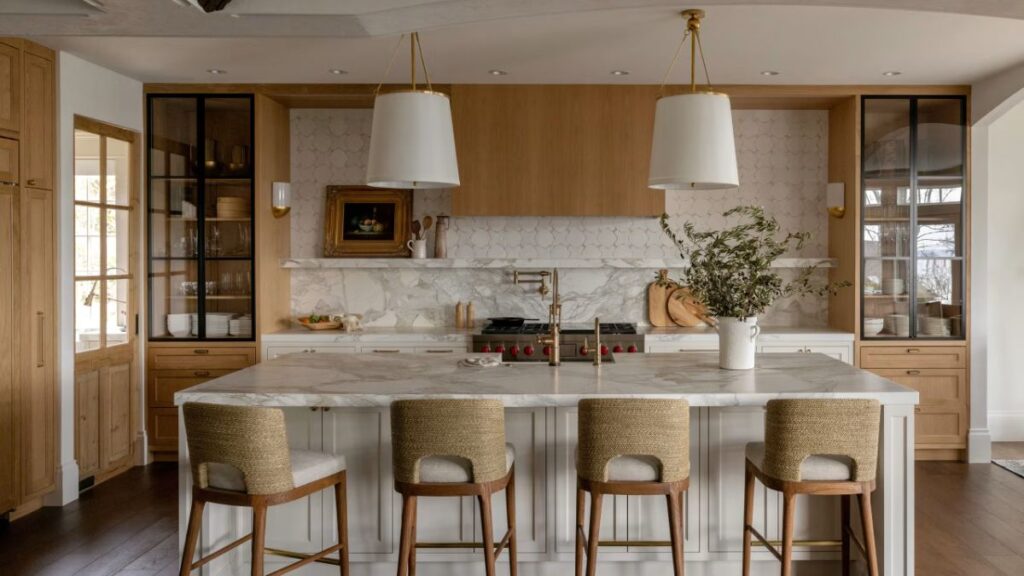Manhattan kitchens present unique challenges that require creative solutions. Small spaces, odd layouts, and sky-high real estate prices mean every square inch counts. Whether you’re renovating a pre-war apartment or designing a modern condo kitchen, the right approach can transform even the tiniest galley into a functional masterpiece.
This guide explores proven strategies from kitchen designer in Manhattan who’ve mastered the art of maximizing space while creating beautiful, practical kitchens that work for city life.
Why Manhattan Kitchens Are Different
Manhattan’s architecture creates kitchen challenges you won’t find anywhere else. Most apartments feature kitchens that were afterthoughts in the original design, squeezed into narrow spaces or awkward corners.
Pre-war buildings often have kitchens with low ceilings, limited electrical capacity, and plumbing that can’t be easily moved. Modern high-rises might offer better infrastructure but come with their own constraints—strict building codes, limited renovation windows, and the need to work around existing mechanical systems.
The cost factor amplifies every decision. Materials and labor cost more in Manhattan, and space comes at a premium. A kitchen renovation that might cost $30,000 in the suburbs can easily reach $60,000 or more in Manhattan.
Essential Design Principles for Small Manhattan Kitchens
Vertical Storage Solutions
Manhattan kitchen designers swear by vertical storage. Wall-mounted cabinets that reach the ceiling add 30% more storage than standard-height cabinets. Pull-down shelving systems make those high spaces accessible without a step stool.
Consider installing narrow pull-out pantries in spaces as slim as six inches. These vertical units can store spices, oils, and canned goods while taking up minimal floor space.
Multi-Functional Islands and Peninsulas
A well-designed island serves multiple purposes in a Manhattan kitchen. It provides extra counter space, storage, and seating—all crucial in small spaces. Rolling islands offer flexibility, allowing you to reconfigure your kitchen layout based on your needs.
For galley kitchens, a peninsula can create defined zones without blocking traffic flow. Many Manhattan designers use peninsulas to separate the kitchen from living areas while maintaining an open feel.
Strategic Lighting Design
Manhattan apartments often lack natural light, making artificial lighting crucial. Layer your lighting with three types:
- Task lighting: Under-cabinet LED strips illuminate work surfaces
- Ambient lighting: Recessed ceiling fixtures provide general illumination
- Accent lighting: Pendant lights or interior cabinet lighting adds visual interest
Proper lighting makes small kitchens feel larger and more welcoming.
Material Selection for Manhattan Kitchens
Countertop Choices That Work
Quartz countertops dominate Manhattan kitchen designs for good reason. They’re durable, low-maintenance, and available in thin profiles that don’t overwhelm small spaces. Light colors like white or pale gray reflect light and make spaces feel larger.
For budget-conscious renovations, high-quality laminate has come a long way. Modern laminates can mimic stone, wood, or concrete at a fraction of the cost.
Cabinet Materials and Finishes
Manhattan’s humidity and temperature fluctuations require durable cabinet materials. Solid wood cabinets are beautiful but expensive and can warp over time. Plywood boxes with solid wood doors offer durability at a lower cost.
High-gloss finishes reflect light and make spaces feel larger, while matte finishes hide fingerprints and scratches better—important for busy Manhattan lifestyles.
Backsplash Solutions
A well-chosen backsplash can make your kitchen feel custom and expensive without breaking the budget. Subway tiles remain popular because they’re timeless and affordable. For visual impact, consider running tiles all the way to the ceiling.
Natural stone backsplashes add luxury but require more maintenance. Porcelain tiles that look like natural stone offer similar aesthetics with easier care.
Maximizing Storage in Small Spaces
Corner Solutions
Corner spaces often go unused in small kitchens. Lazy Susans, corner drawers, and pull-out corner systems maximize these awkward spaces. A well-designed corner solution can add 40% more usable storage.
Inside Cabinet Organization
The inside of your cabinets matters as much as the outside. Pull-out drawers, door-mounted racks, and adjustable shelving systems help you use every inch efficiently.
Drawer dividers keep utensils organized, while pull-out trash systems hide unsightly garbage cans. These details separate professional kitchen design from amateur attempts.
Appliance Integration
Built-in appliances create a seamless look while saving space. Counter-depth refrigerators don’t protrude into walkways, and drawer-style dishwashers can fit in spaces too small for traditional models.
Consider combination appliances like microwave-convection ovens that serve dual purposes without taking up extra space.
Working with Manhattan’s Building Restrictions
Co-op and Condo Board Approvals
Most Manhattan buildings require board approval for kitchen renovations. Submit detailed plans showing electrical, plumbing, and structural work well in advance. Some buildings have specific requirements for noise control, work hours, and material transport.
Permit Requirements
Major kitchen renovations in Manhattan require permits from the Department of Buildings. This includes electrical work, plumbing changes, and structural modifications. Work with contractors familiar with NYC permit processes to avoid delays.
Utility Considerations
Manhattan’s older buildings often have limited electrical capacity. Major kitchen renovations might require electrical upgrades, which can be expensive and time-consuming. Gas lines may also need modification for new appliances.
Budgeting for Your Manhattan Kitchen Renovation
Cost Breakdown
A typical Manhattan kitchen renovation breaks down as follows:
- Cabinets: 35-40% of budget
- Labor: 25-30% of budget
- Appliances: 15-20% of budget
- Countertops: 10-15% of budget
- Flooring: 5-10% of budget
- Lighting and electrical: 5-10% of budget
Money-Saving Strategies
Keep existing plumbing and electrical locations when possible. Moving these utilities significantly increases costs. Consider refinishing existing cabinets instead of replacing them entirely.
Shop for appliances during major sales events, but ensure they’ll fit your space before purchasing. Standard appliances might not work in Manhattan’s unique kitchen layouts.
Choosing the Right Kitchen Designer
Experience with Manhattan Properties
Look for designers with specific experience in Manhattan apartments. They understand building restrictions, space constraints, and local suppliers. Ask to see portfolios of similar projects in your neighborhood.
Design Process and Communication
A good kitchen designer will visit your space, measure carefully, and ask detailed questions about your lifestyle. They should provide 3D renderings and detailed plans before starting work.
Clear communication is essential. Your designer should explain options, discuss trade-offs, and keep you informed throughout the process.
Make Your Manhattan Kitchen Dreams Reality
Kitchen designer in Manhattan require balancing space constraints, building restrictions, and budget considerations while creating a beautiful, functional space. Success depends on smart planning, quality materials, and experienced professionals who understand the unique challenges of city living.
Start by defining your priorities—whether that’s more storage, better workflow, or simply a more attractive space. Work with a designer who understands Manhattan’s unique requirements and can guide you through the process from concept to completion.
Your dream kitchen is possible, even in Manhattan’s challenging spaces. With the right approach, you can create a kitchen that not only functions beautifully but also adds significant value to your home.
Contact Info:
Name : D2 Design and Works
Email: info@d2designandworks.com
Phone: (212) 873-7272
Website: https://www.d2designandworks.com/






